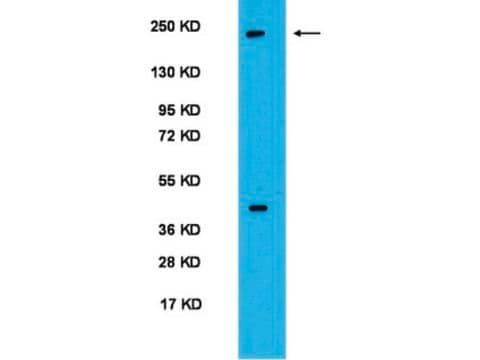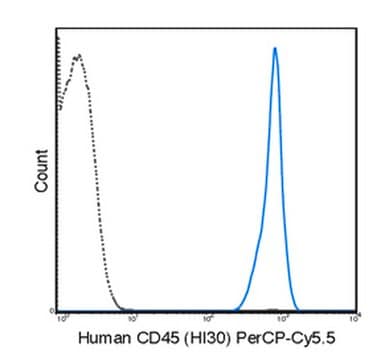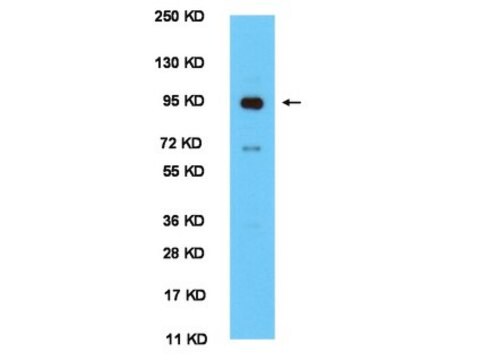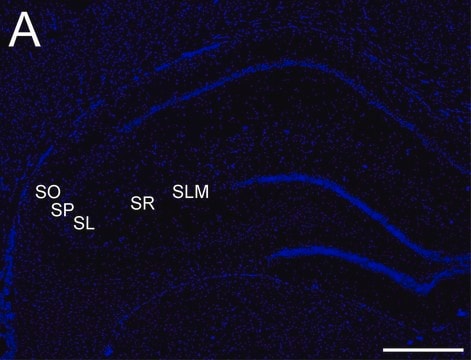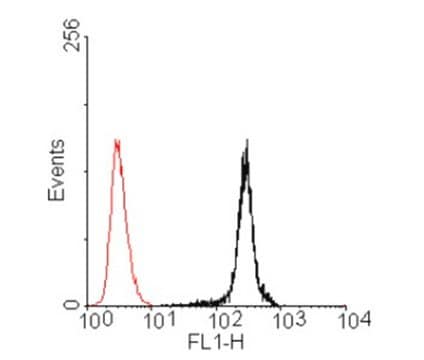AB2204
Anti-BMAL1 Antibody
serum, from guinea pig
Sinónimos:
ARNT-like protein 1, brain and muscle, Basic-helix-loop-helix-PAS protein MOP3, Brain and muscle ARNT-like 1, member of PAS protein 3, aryl hydrocarbon receptor nuclear translocator-like, bHLH-PAS protein JAP3, basic-helix-loop-helix-PAS orphan MOP3 2, m
About This Item
Productos recomendados
biological source
guinea pig
Quality Level
antibody form
serum
antibody product type
primary antibodies
clone
polyclonal
species reactivity
mouse, human, rat
technique(s)
western blot: suitable
NCBI accession no.
UniProt accession no.
shipped in
wet ice
target post-translational modification
unmodified
Gene Information
human ... ARNTL(406)
mouse ... Arntl(11865)
rat ... Arntl(29657)
General description
Specificity
Immunogen
Application
Neuroscience
Circadian Rhythm & Sleep
Quality
Lot Specific Tested Application 1: Western Blot
Target description
Physical form
Storage and Stability
Analysis Note
C2C12 Tissue lysate
Disclaimer
Not finding the right product?
Try our Herramienta de selección de productos.
Storage Class
10 - Combustible liquids
wgk_germany
WGK 1
Certificados de análisis (COA)
Busque Certificados de análisis (COA) introduciendo el número de lote del producto. Los números de lote se encuentran en la etiqueta del producto después de las palabras «Lot» o «Batch»
¿Ya tiene este producto?
Encuentre la documentación para los productos que ha comprado recientemente en la Biblioteca de documentos.
Nuestro equipo de científicos tiene experiencia en todas las áreas de investigación: Ciencias de la vida, Ciencia de los materiales, Síntesis química, Cromatografía, Analítica y muchas otras.
Póngase en contacto con el Servicio técnico
